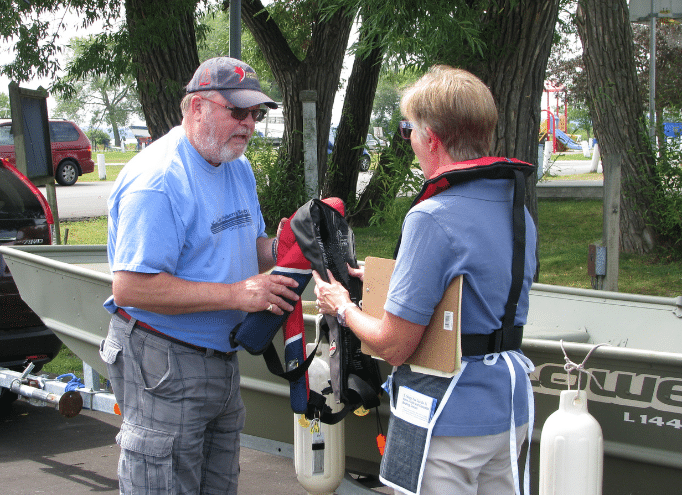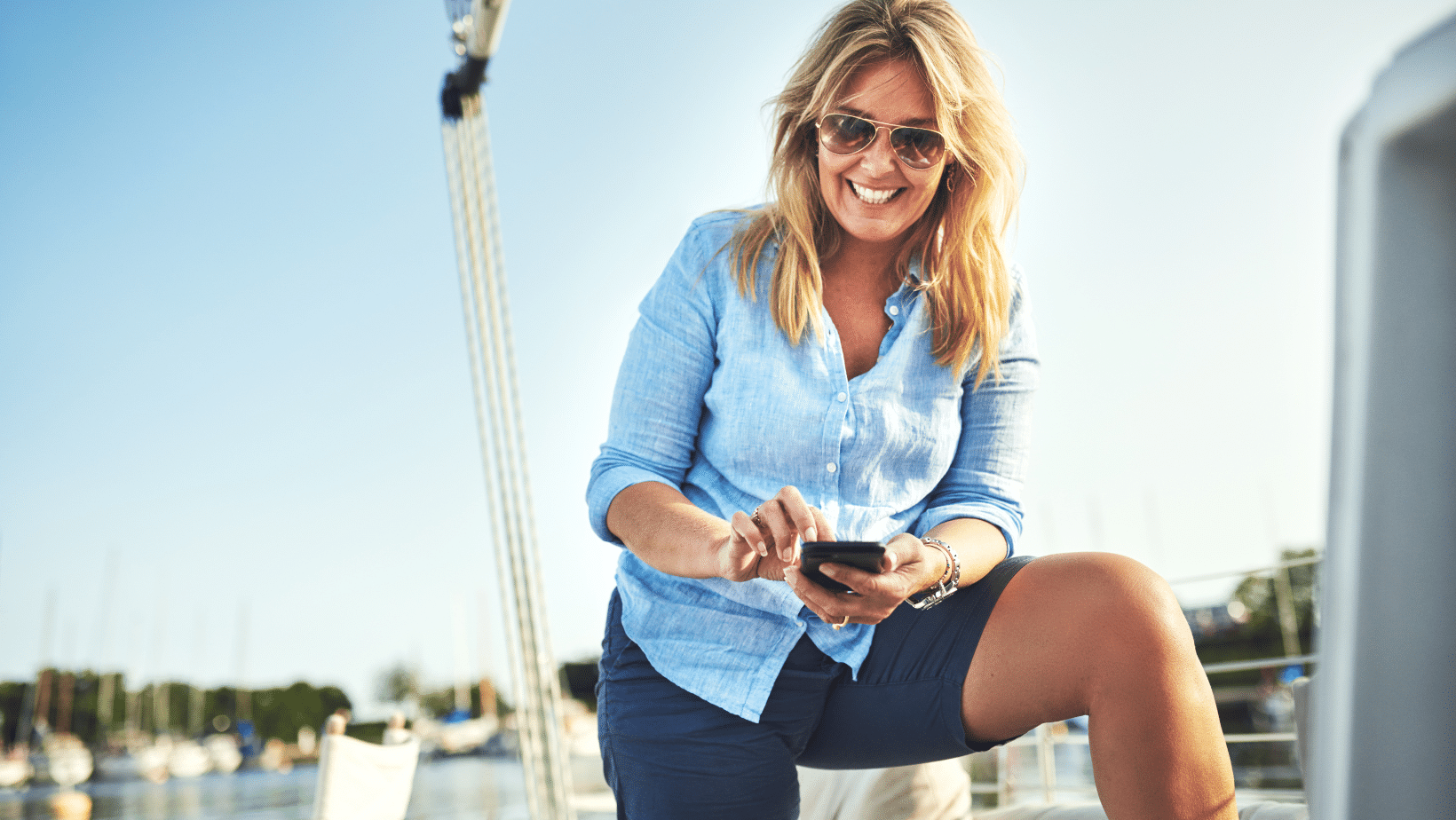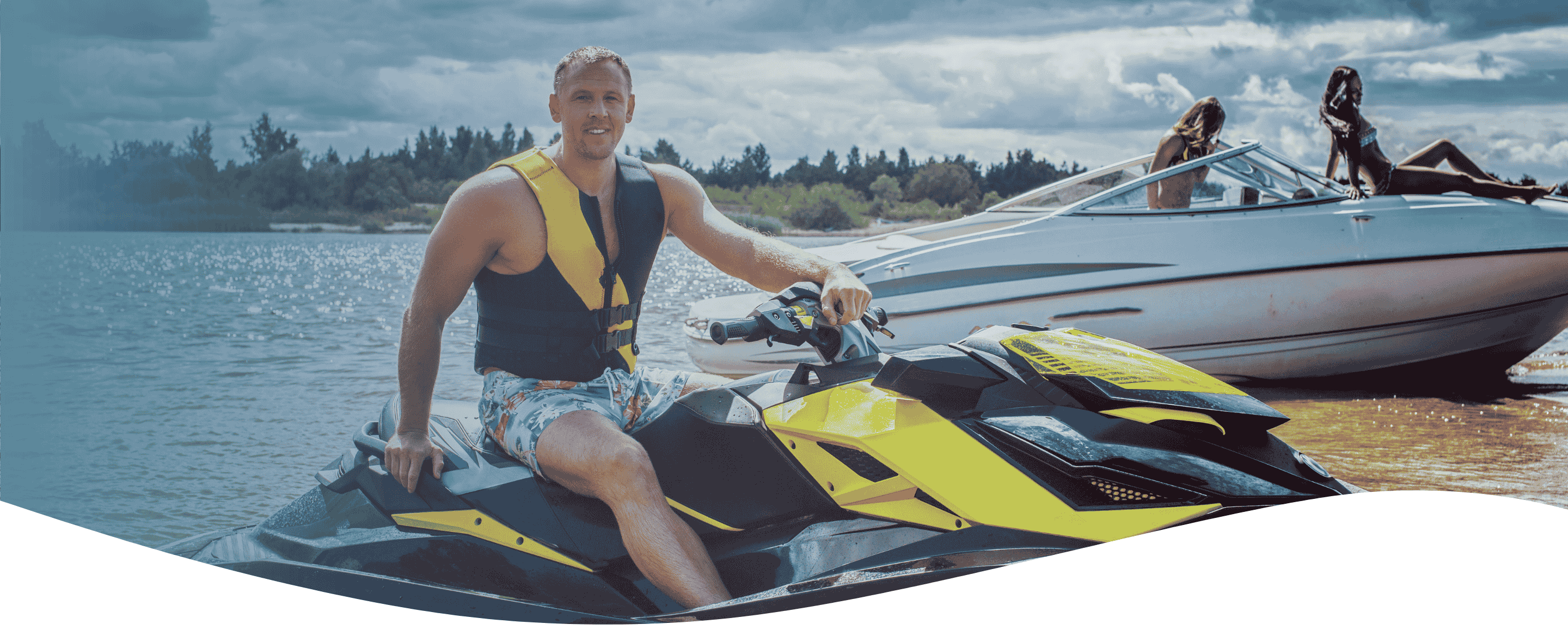OWNERSHIP
Personal watercraft offer a fantastic way to embrace sunny summer days on the water. As an operator, it’s essential to ride smart and responsibly. Below are some tips and frequently asked questions to enhance your experience.
What is a Personal Watercraft (PWC)?
A personal watercraft (PWC) is a commonly used term to describe popular brand names like Jet-Ski, WaveRunner or Sea-Doo. Operators sit, stand, or kneel on these vessels instead of sitting in them like other types of boats. They are also designed to use water jet propulsion to manoeuvre through the water.
How Old Must You be to Legally Operate a Personal Watercraft?
According to the Transport Canada Safe Boating Guide, individuals under 16 years of age cannot operate a personal watercraft, even with direct supervision.
Direct supervision means that a person aged 16 or older is present in the boat, overseeing the operator. Note that age and horsepower restrictions do not apply in the waters of the Northwest Territories and Nunavut.
Do You Need a Boat Licence to Drive a Personal Watercraft?
Yes. To legally operate a personal watercraft, a Pleasure Craft Operator Card (PCOC), proof of completion of a Canadian safe boating course taken prior to Aril 1, 1999 or a Rental Boat Safety Checklist is required. One of these is accepted proof of operator competency and ensures familiarity with the buoyage system, waterway sharing, and the “rules of the road.”
If you’re renting a personal watercraft, or any other vessel without a PCOC or proof of operator competency, you’ll need to complete a Rental Boat Safety Checklist, which is valid only for the rental duration.
Do Personal Watercraft Need to be Licensed?
Yes, personal watercraft must have a Pleasure Craft License, carry a copy on board and display hull numbers on both sides of the bow. You can learn more about Pleasure Craft Licences and how to obtain, transfer, or display them here.
Do Personal Watercraft Need Insurance?
No, boat insurance is not legally required in Canada. However, obtaining insurance is advisable to safeguard against damage, theft, and accidents. It also provides liability coverage for injuries or property damage.
What Safety Equipment is Required on a Personal Watercraft?
The Transport Canada Safe Boating Guide outlines the following minimum safety equipment requirements for personal watercraft:
If everyone on board is wearing a Canadian-approved lifejacket or PFD of appropriate size, you are only required to carry:
- A sound-signalling device (like a pea-less whistle or air horn).
- A working watertight flashlight, if the personal watercraft is used after sunset or before sunrise, or in periods of restricted visibility.
Note: The lifejacket or PFD must be inherently buoyant, not inflatable.
Keep in mind that these are minimal requirements; consider additional items such as a telescopic paddle, anchor, GPS, VHF radio, chart, dock lines, or buoyant heaving line before heading out.
What You Should Know Before Using a Personal Watercraft for Tubing, Wakeboarding, or Waterskiing:
When using the personal watercraft for towing sports, it must accommodate three people: the skier, a spotter to keep watch, and the operator. Ensure there is an empty seat available for the person being towed in case they need to board. These are commonly referred to as 3up versions.
You may not tow anyone when visibility is poor or from one hour after sunset until sunrise.
Can I use a Personal Watercraft for Fishing?
Yes, numerous personal watercraft manufacturers offer a variety of accessories, including rod holders, bait and tackle compartments, fish finder mounts, as well as cargo boxes or coolers to assist you in storing your fishing gear and catch.
Before you head out for fishing, remember to review your region’s fishing regulations to ensure you know which species are legal to catch and during what months. Don’t forget to have your fishing licence with you on board.
When removing your personal watercraft from the lake, be sure to adhere to the clean, dry, and drain protocol to help prevent the spread of invasive species.
Before Heading Out on your Personal Watercraft:
- Read the owner’s manual.
- Check your fuel level and make sure you have enough for the trip out and back with some in reserve.
- Ensure you have your Pleasure Craft Operator Card, Pleasure Craft Licence paperwork, and personal identification.
- Always wear an approved lifejacket or PFD, again, not an inflatable, and it’s advisable to be a competent swimmer.
- If there is an engine shut-off lanyard, make sure it is attached to your wrist or PFD.
- Wear personal protection such as thermal gear, footwear, gloves, goggles, a hat, and sunscreen.
- Avoid operating the craft in shallow water to prevent damage or injuries from debris.
- Start the craft in water that is at least half a metre deep.
- Take your initial practice rides in an uncrowded area.
While Using a Personal Watercraft:
- Observe near shore speed regulations and avoid creating unnecessary wave action. Minimize speed near areas where boats are moored or docked.
- Stay alert to your surroundings and the presence of other boats. Check before turning and avoid erratic maneuvers.
- Maintain distance from water-skiers, divers, swimmers, anglers, and less maneuverable boats.
- Avoid running through shallow waters such as swamps, bogs, and habitats for fish and wildlife.
- Keep hands, feet, hair, clothing, etc., away from the pump intake.
- When returning to shore, shut off the engine in shallow water and push the craft ashore.
Best Practices for the Personal Watercraft Operator:
- Avoid becoming overtired, as this may hinder your ability to remount the craft after a spill.
- Refrain from continuous operation in one area and excessive noise.
- Do not jump the wakes of passing boats.
- Avoid lending the craft to inexperienced or uncertified riders.
- Operating the craft at night is illegal unless equipped with approved navigational lights.
- Never operate or allow others to operate the craft under the influence of alcohol or drugs.
- Always practice courtesy and common sense when navigating the waters.
By: Vanessa Schmidt
with excerpts from CanBoat / NautiSavoir’s boating courses.
BOATERS HELPING BOATERS
Need More Information?

Get Your Boating Licence
Regardless of boat length or engine horsepower, all motorized boat operators in Canada are required by law to have a PCOC.

Free Safety Gear Checks
CanBoat volunteers will check your boat for free… and if you have everything you need, you’ll get a Safety Inspection Sticker.

Safe Boating Guide
Safety Tips and Required Equipment lists. Download a PDF of Canada’s Safe Boating Guide.
CanBoat / NautiSavoir offers the most comprehensive and recognized courses, built by boaters, for boaters to get you and your crew ready for every adventure and any situation.
Members are eligible for 10%-25% discounts on select courses.
